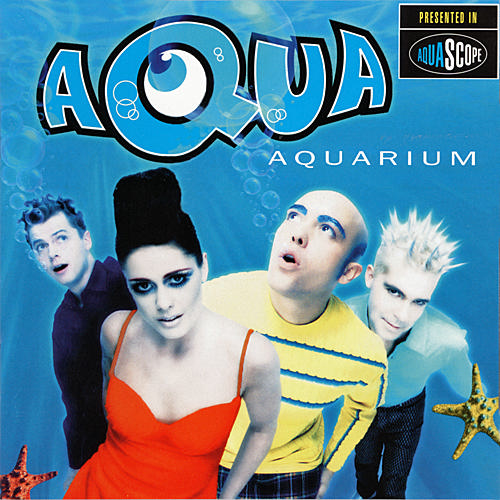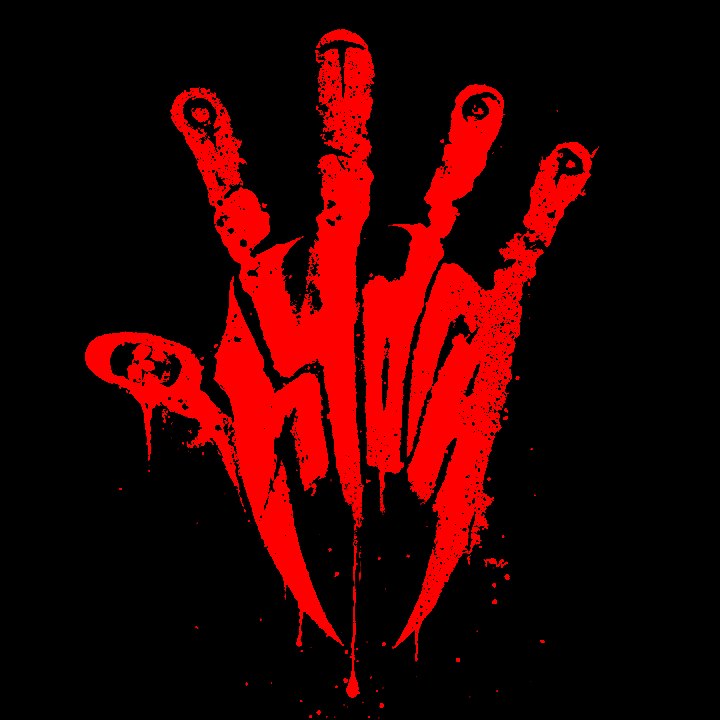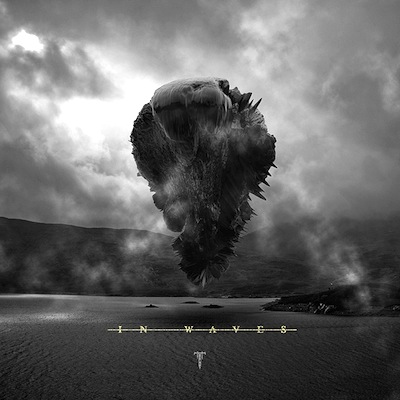 Aquarium — also known as “the album your little sister used to listen to” — makes no attempt at disguising what it is. It’s not varied, or subtle, or smart. It grabs hold of a single working formula (fun danceable bubblegum pop) and spends forty minutes mugging it in a dark alley.
Aquarium — also known as “the album your little sister used to listen to” — makes no attempt at disguising what it is. It’s not varied, or subtle, or smart. It grabs hold of a single working formula (fun danceable bubblegum pop) and spends forty minutes mugging it in a dark alley.
The songs are simple but very tightly constructed, with production as light and airy as spongecake. Lene Nystrøm’s voice has a strange but not unpleasant tonality to it, her voice sounds like that of a talented singing alien. Male vocalist René Dif exists mostly as a foil to Nystrøm’s voice. He could never carry a song on his own, but his back-and-forth exchanges with the female vocals are fun and energetic.
Aqua songs are very catchy. The melodies have a tendency of entering your head and kind of barricading themselves in there, Rorke’s Drift style — armies of Zulus may be needed to dislodge them. “Barbie Girl” is the most famous track (Blender or someone referred to it as “Scandi-Wegian pedo pop”) but “Doctor Jones” and “My Oh My” are also very good. “Be a Man” is boring, but “Turn Back Time” brings the album to a new level of class (ie, any level of class). You’d be ashamed to listen to the rest of this album in mixed company, but “Turn Back Time” sounds mature and sophisticated.
For the most part, the album is full of childish nursery-rhyme lyrics are both adorable and entertainingly creepy. There’s a fair few double-entendres here and there, no doubt an adult could fit his or her own experiences to the words.
Still, the album was clearly written with a particular age range in mind. “Heat of the Night” has Rene Dif confiding “the tequila is here” in an aren’t-I-scandalous voice. So, he brought tequila. I wonder what else he brought that we can’t tell mom and dad about. Alcoholic chocolates shaped like hearts? Stripped by Christina Aguilera…the UNCENSORED version? Plainly, shit is about to go down.
Aquarium is very embarrassing but I think it survives better today than Drake or Pitbull’s albums will in 15 years. It’s catchy, and relatively free of annoying 90s gimmicks. If you want the manly version of this album, acquire I Get Wet by Andrew WK, which is 95% the same but has loud guitars.
 Otep describe themselves as an “artcore collective,” I think that says it all.
Otep describe themselves as an “artcore collective,” I think that says it all.
It is difficult to talk about this band without becoming sarcastic. I heard some songs on 2009’s Smash the Control Machine, which struck me as activism-obsessed liberal mallcore, heavily influenced by Slipknot and Hed(pe), with an annoying female vocalist. But it was music. When you pressed play, loud noise boomed around the place.
When you press play on this, the only loud noise booming around the place is the sound of your uncontrollable laughter. Hydra is practically a spoken word album. It’s 70 minutes long, with at least 50 of those minutes being angsty mutterings, ambient noise, or silence. What a retarded idea. Who the fuck wants to listen to this?
Finding good songs on STCM required a bit of dumpster diving. On Hydra there are very few songs at all, let alone good ones, so all you can do is enjoy the occasional inspired moment. “Hag” has these Nile-sounding blastbeats. “Blowtorch Nightlight” gets really uptempo and fun in the last 40 seconds. Other tracks like “Seduce and Destroy” have heavy guitars but are just utterly boring and limp along like Captain Ahab and Professor X in a three-legged race.
The rest of the album is just a book on tape with a few fragments of metal riffs and keyboard melodies. Otep Shamaya’s voice is the only consistent factor: it is consistently annoying. Whisper… BLAAARGGHHHHH… whiiiiiine…
In general I’m wary of bands with political or socially conscious lyrics, no matter what those lyrics are. When you have (hypothetically) catchy, entertaining music, write lyrics about Iraq, and fill a thundering stadium with fans…are so you deluded to think that your political views are the reason they bought tickets? Do you think that you’re now the leader of a social movement? Henry Rollins is the classic example of a guy crossing his urine streams in such a way. He keeps trying to reinvent himself as some kind of poet/activist, when all anybody truly cares about is a punk rock album he made thirty years ago.
Otep is a bit behind the eightball (they haven’t made a great album yet) but the principle is the same. In general, the bands that become famous for political lyrics do so because of novelty, not because the lyrics themselves are that compelling. In an ocean of brainless Ramones soundalikes, The Clash’s lyrics stood out. In an ocean of brainless speed metal bands, Metallica’s lyrics stood out. If The Clash or Metallica had submitted their political views to an op-ed piece, they would have sunk without a trace. Even in “seen it all” 2013, it’s not ridiculously common for metal bands to address political issues (I’m talking about actual, in-depth commentary, not “fuck the system!” or “support the troops!”), and when you’ve got a female vegetarian lesbian as the singer of your band, then you have more novelty value than most. But that’s all it is: novelty. If you’re a metal band famous for political lyrics, it’s not your brilliant opinions people are noticing. They notice you because you are like a dog that has learned to walk on its hind legs.
The long-ass closing track “Theophagy” just goes on and on forever, repeating itself like a broken record. Recurrent lyric: “I will rise like a Hydra / from the ash.” I assume she’s talking about a phoenix. The Hydra doesn’t rise from the ash. Fire is how you kill it (or at least Hercules did), so ash is the last place you’d expect a Hydra to rise from. And “Hydra” is a proper noun. It refers to a specific, singular monster. Saying “I will rise like a Hydra” is like saying “I will bike through France with a needle in my butt like a Lance Armstrong.”
If you like this band, get a life.
 Trivium is part of the late noughties trend I call “hardcore band goes thrash.”
Trivium is part of the late noughties trend I call “hardcore band goes thrash.”
It’s where a hardcore or scenester or emo or whatever band starts growing their hair long, ripping off Metallica a little in their riff construction, and acting like they’re old-school metal. Tim Lambesis. Bullet for my Valentine. Even Disturbed. Everyone’s done it. It’s like the reverse of selling out. I love old fashioned metal. I hate bandwagon hopping pieces of shit pretending they’re old fashioned metal.
There’s a corollary: trendy modern bands with harmonised guitar leads saying they’re inspired by Iron Maiden. Fact: any modern hardcore band that uses harmonised leads was inspired by In Flames (or some other In Flames sounding band like Arch Enemy). Don’t argue. It’s the truth. Oh, sure…they have all the Iron Maiden albums now, because you have to live the lie…but they were fans of In Flames first.
In Waves is Trivium’s fifth album. They’ve scaled back the overt Metallica/Annihilator influences of The Crusade, ditched the epic pseudo-Iron Maiden trappings of Shogun, and delivered a focused, brutal punch of their not-so-powerful brand of metal. In Waves is as polished as a metal album can get. The production is huge and thick and loud, to the point where Nick Augustomendezdfasdfkhj (who the fuck knows who drums for this band) threatens to blow speakers apart with each snare hit. Matt Heafy and Corey Can’t-Be-Bothered-to-Type-Out-His-Name bring their hardest and toughest guitar tones yet. (The bassist is an Unperson as always.)
Songwriting verdict: all over the place. Trivium alternate good and crap, over and over and over and over. The surging djent riff powering the title track…this is good. The annoying melodic verses and repetitive chorus…this is bad. The powerful rhythmic stomp of “Dusk Dismantled”…this is good. The obnoxious “bree” inhales on the final chorus…look, deathcore is over, you dumbasses. You should be over, too.
Most of the songs feature choppy unmemorable “core” riffs and horrible clean choruses. The entire lead section is greatly simplified compared to their last album. It seems they had trouble replicating Shogun’s three-guitar parts live, so they ditched them for a “only write enough solos to keep up the charade of being old school” approach. Shogun was inconsistent too, but at least it tonally sounded unique and interesting. Now Trivium sounds exactly like everyone else.
I do love one song unreservedly. “Chaos Reigns” is the heaviest Trivium song to date, featuring fast as hell drumming and an amazing set of riffs. Trivium slays on this song. “Chaos Reigns” is actually frustrating, because it shows what the band is capable of. I know the tiger’s there. But they haven’t tamed it yet, and they probably never will. Everyone’s always wondered when Trivium will fully deliver on their potential. Five albums in and you have to wonder how long the wait will be.
It annoys me when bands write an album with just one killer song. In a sense, it’s worse than an album with nothing but duds. Why? Because it’s a tease. I’d rather listen to an untalented band that can’t play music than a talented band that refuses to play music.
 Aquarium — also known as “the album your little sister used to listen to” — makes no attempt at disguising what it is. It’s not varied, or subtle, or smart. It grabs hold of a single working formula (fun danceable bubblegum pop) and spends forty minutes mugging it in a dark alley.
Aquarium — also known as “the album your little sister used to listen to” — makes no attempt at disguising what it is. It’s not varied, or subtle, or smart. It grabs hold of a single working formula (fun danceable bubblegum pop) and spends forty minutes mugging it in a dark alley.

